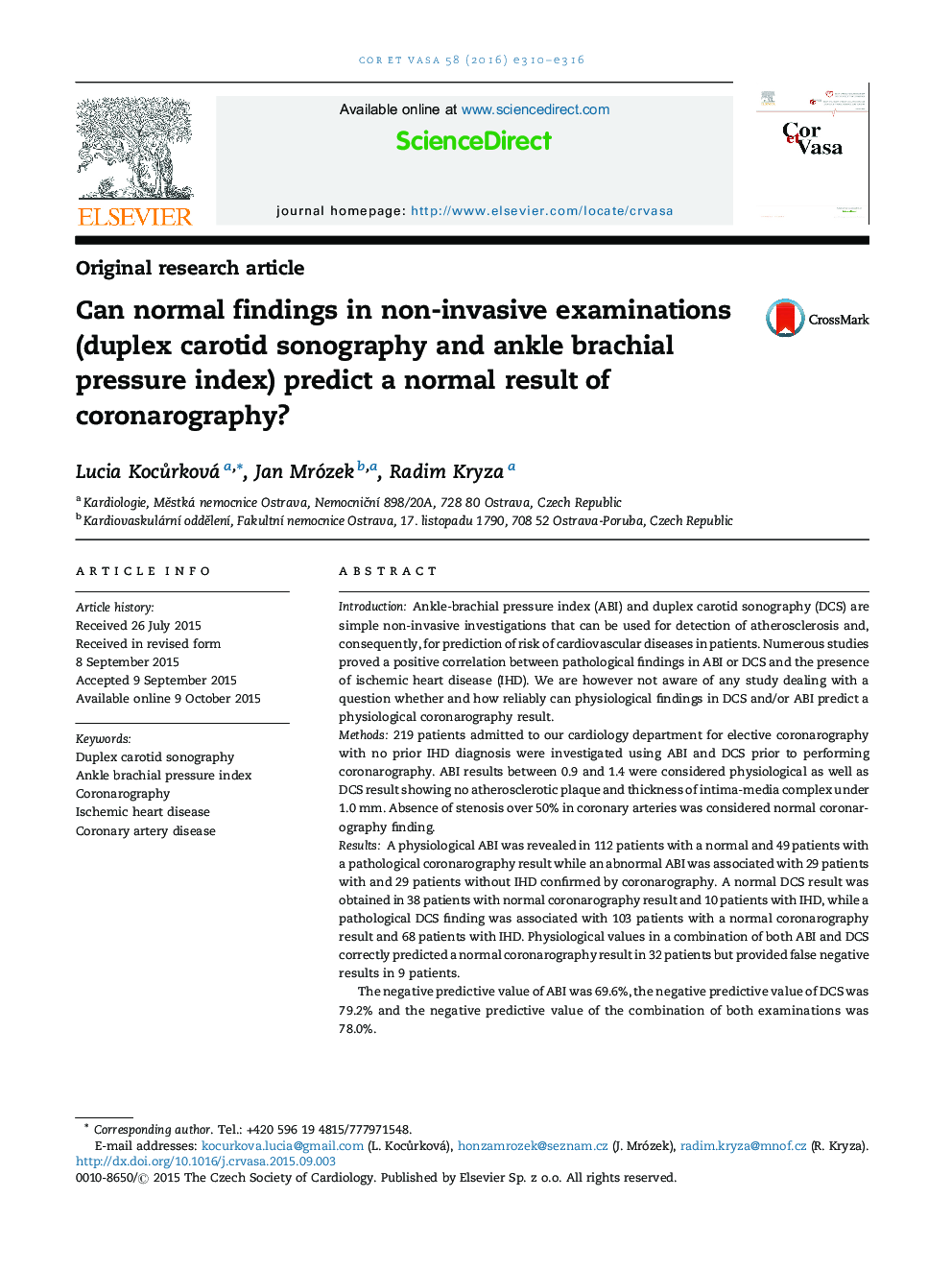| Article ID | Journal | Published Year | Pages | File Type |
|---|---|---|---|---|
| 2728277 | Cor et Vasa | 2016 | 7 Pages |
IntroductionAnkle-brachial pressure index (ABI) and duplex carotid sonography (DCS) are simple non-invasive investigations that can be used for detection of atherosclerosis and, consequently, for prediction of risk of cardiovascular diseases in patients. Numerous studies proved a positive correlation between pathological findings in ABI or DCS and the presence of ischemic heart disease (IHD). We are however not aware of any study dealing with a question whether and how reliably can physiological findings in DCS and/or ABI predict a physiological coronarography result.Methods219 patients admitted to our cardiology department for elective coronarography with no prior IHD diagnosis were investigated using ABI and DCS prior to performing coronarography. ABI results between 0.9 and 1.4 were considered physiological as well as DCS result showing no atherosclerotic plaque and thickness of intima-media complex under 1.0 mm. Absence of stenosis over 50% in coronary arteries was considered normal coronarography finding.ResultsA physiological ABI was revealed in 112 patients with a normal and 49 patients with a pathological coronarography result while an abnormal ABI was associated with 29 patients with and 29 patients without IHD confirmed by coronarography. A normal DCS result was obtained in 38 patients with normal coronarography result and 10 patients with IHD, while a pathological DCS finding was associated with 103 patients with a normal coronarography result and 68 patients with IHD. Physiological values in a combination of both ABI and DCS correctly predicted a normal coronarography result in 32 patients but provided false negative results in 9 patients.The negative predictive value of ABI was 69.6%, the negative predictive value of DCS was 79.2% and the negative predictive value of the combination of both examinations was 78.0%.ConclusionsA physiological finding of ABI and particularly DCS investigations can predict a normal coronarography finding. Both methods are cheap and non-invasive and as such, they can help in decision making whether or not to refer patients with intermediate risk of IHD for invasive coronarography investigation.
